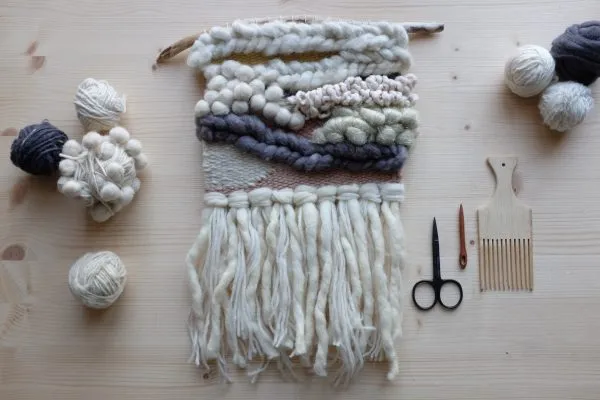If you think knitting is just about making woolly jumpers, or that crochet is some sort of game with mallets, then think again!
Our two favourite yarn crafts may be very closely related, even considered sister crafts, but there are big differences when you compare crochet vs knit fabrics and stitches.
If you don't know the difference between crochet and knitting, we'll explain it all in this crochet vs knitting guide.
Knitting vs crochet: what's the difference?
The fundamental difference is that knitting uses two knitting needles and crochet uses a single crochet hook. But that's just the basics – the real knitting vs crochet differences run far deeper!
Crochet vs knit stitches
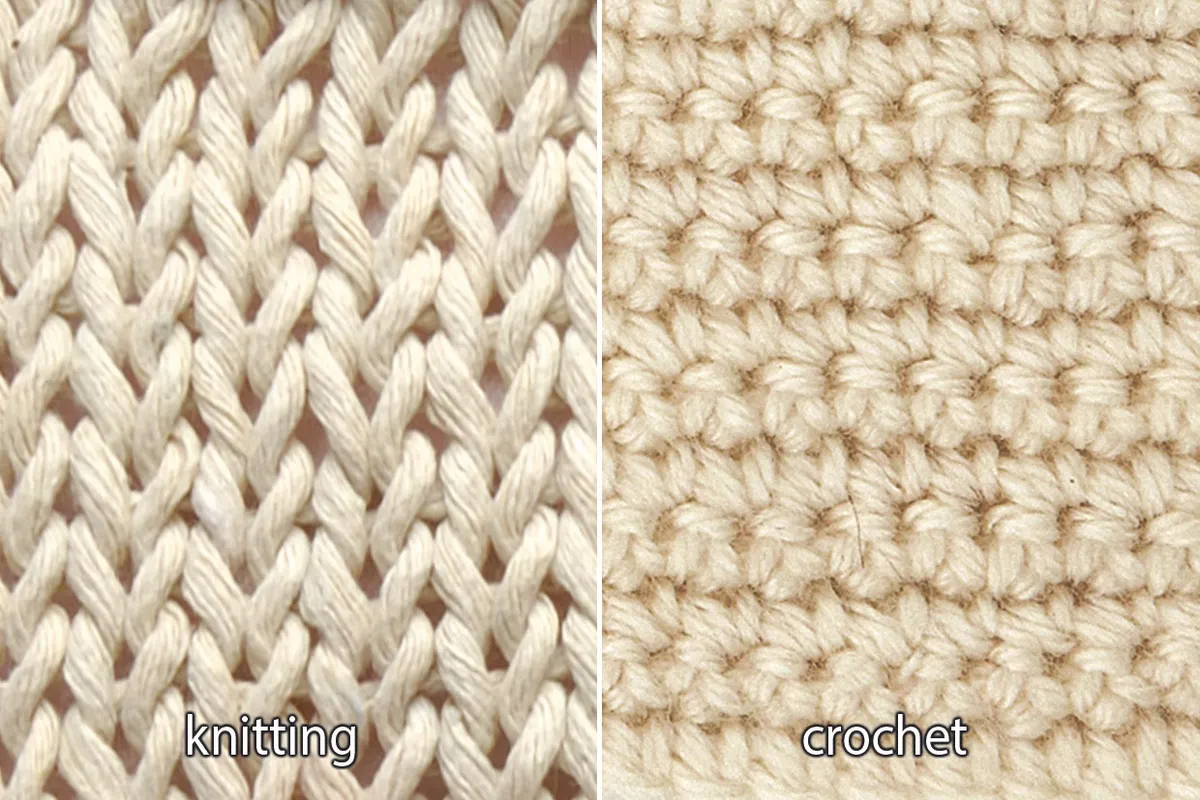
One of the biggest, and perhaps the most important difference between knitting and crochet, are the stitches you create.
Knitting stitches are interlocking loops, and their construction means that each stitch is able to stretch quite a bit. Crochet stitches are more like knots, making them very solid, and any stretching will normally be minimal and largely decided by the type of yarn used.
It's because of these knitting vs crochet factors that knitting is so suited to items like socks or jumpers as they can stretch to fit your body shape, and crochet is great for things like shawls, blankets and any other projects that you want to keep their shape.
This is just a general rule however, both crafts have a huge range of different types of stitches, including some that mimic the effects of the other craft.
The other difference between knit vs crochet stitches is the way in which the stitches are constructed.
In crochet you complete each stitch one at a time, so the loops on your hook will only ever be concerning that one stitch you are currently working on (with the exception of some specialist stitches).
With knitting however, all of your stitches stay on your needles and are active for the whole row, only being completed once you work the next row. This means that if you drop a stitch in knitting, it can potentially lead to a whole column of stitches underneath it unraveling – called a 'ladder'.
If you miss a stitch in crochet, your fabric will still be structurally sound but it will affect the shape/appearance of your work.
Knitting vs crochet yarn
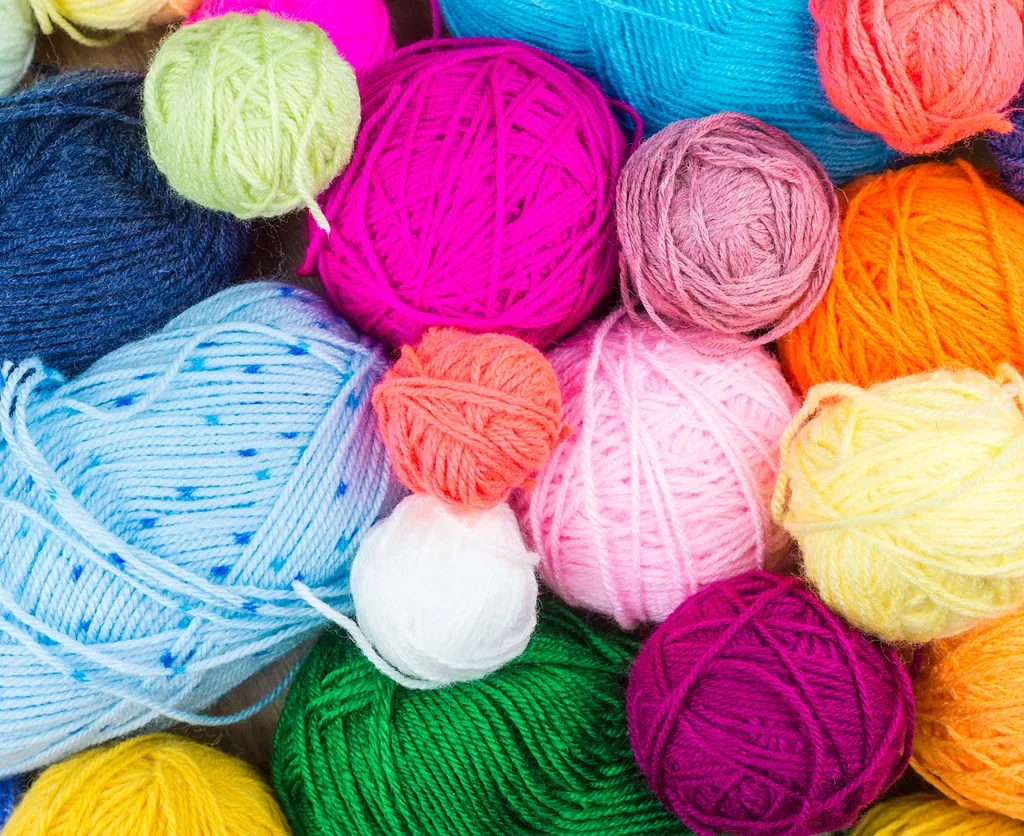
There isn't really any difference between knitting and crochet when it comes to yarn that can be used, but there are a few factors to consider when choosing a yarn for each craft.
Some crochet projects will use lace yarn or crochet thread with a very fine crochet hook, especially if it's for a particularly small and detailed project.
Crochet is particularly suited to lace projects because the solid structure of the stitches means that you can use them to create open designs and patterns with plenty of negative space.
Crochet thread is rarely used for knitting – in fact, it's hard to find needles small enough to use with it! Instead, knitters tend to choose laceweight or 4ply yarn to create open lace work on bigger needles.
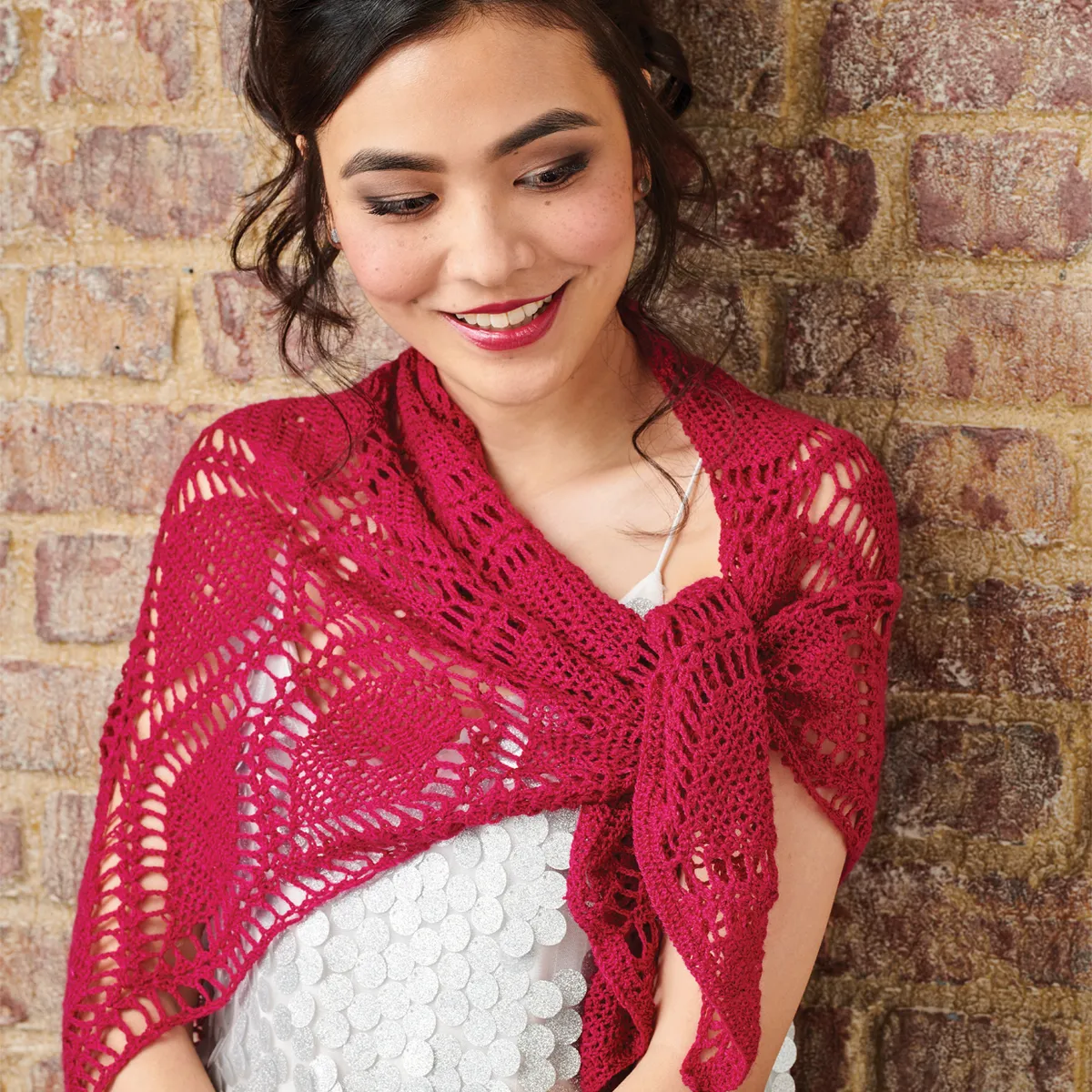
As knitting generally creates a fuller fabric with less negative space/fewer gaps between the stitches, yarns that have the ability to felt, such as 100% wool, are more often used by knitters than by crocheters.
Felting is where the fibres blend together, normally enhanced by washing or agitating.
With knitting this reduces the elasticity of the stitches to create a firm, dense fabric – it can be done with crocheted fabrics as well, but is a lot more reliant on the type of stitches you have used.
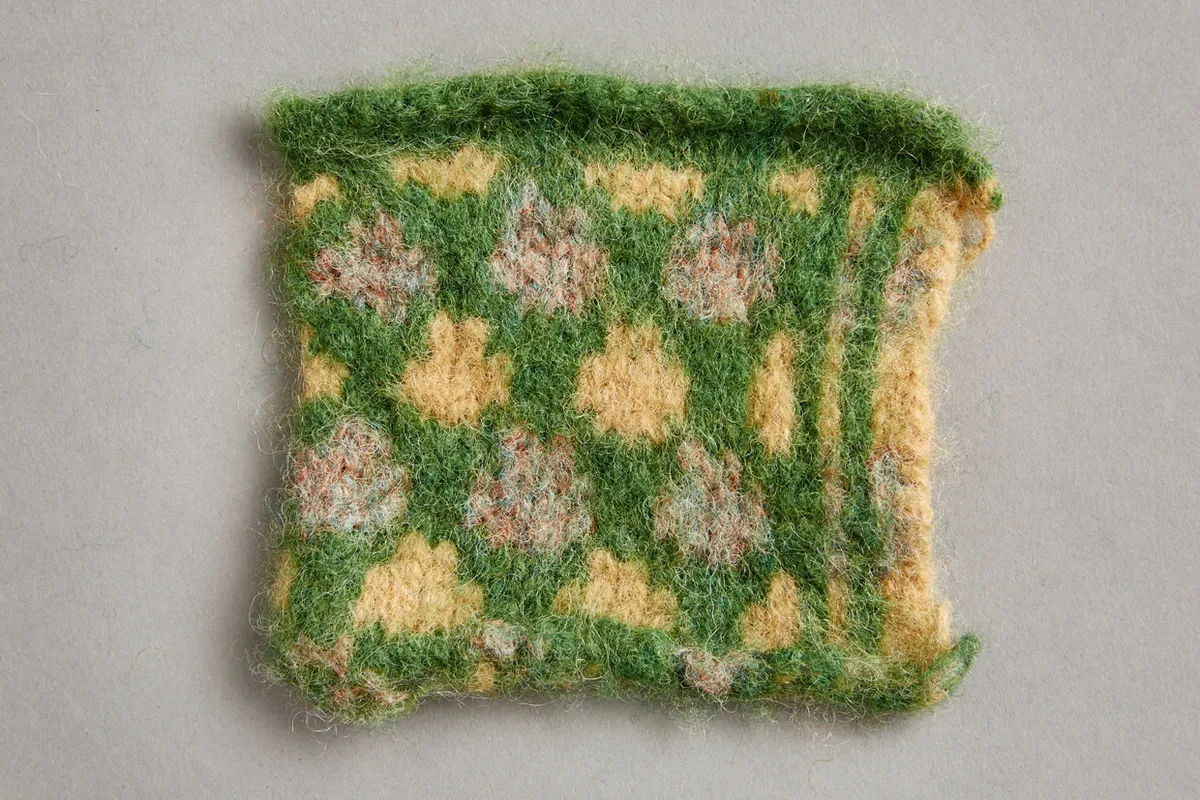
Finally, there are a few general preferences that each craft has. Knitters will often use 4ply or sock yarn, but many crocheters find this yarn a little bit too fine.
Similarly, many crocheters enjoy using chunkier yarns as it enables them to clearly see the stitches and make large projects quickly. For knitters this not only means using larger needles but also that it might not be possible to fit all of those chunky stitches on your needles.
Which is easier knitting or crochet?
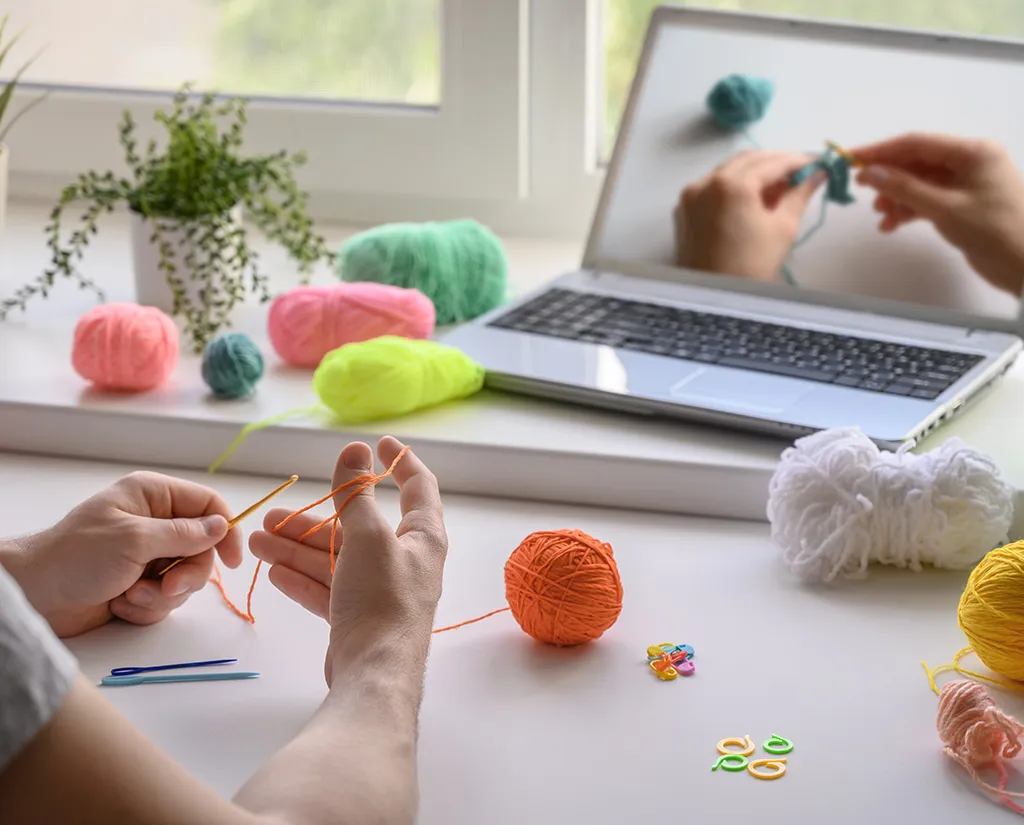
There's no simple answer to which is easier when it comes to knitting vs crochet – it all depends on the individual. In fact, it's quite common for someone who starts off trying to knit actually finding crochet easier, and vice versa.
If you're a beginner wondering 'is knitting or crocheting easier' – in all honesty learning the basics of each craft is no more difficult between one and the other.
Some people can initially find the holding of two needles a bit fiddly, or that knitting for too long can give you hand cramps. Likewise, beginners can find crochet to be quite stiff at first, as beginners can especially struggle with tension.
But the truth is, there's no simple answer – it's all about trying it out and finding which feels most comfortable for you. If you're struggling, give it time, as it takes a while to get used to any new craft!
The best way of deciding which craft is for you is by looking at the pros and cons of knitting vs crochet!
Alternatively, you can take our fun quiz to find out which creative hobbies for adults are right for you!
Knitting pros and cons
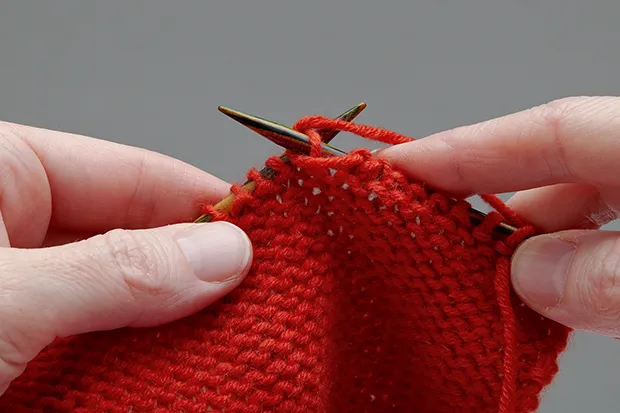
Drape
As we've mentioned earlier, the interlocking nature of knitting stitches means you end up with a fabric that is a lot more flexible, making it perfect for garments. Not only will they fit better but the knitted fabric will also flow and hang more naturally – what is referred to as drape.
Shapes
As a general rule with knitting, the majority of the time you will be creating flat fabrics. You can shape your work with stitches, but this is limited to some degree.
When it comes to creating 3D shapes with standard knitting, you will normally achieve this by making different panels and then assembling them.
The exception is with projects like socks, where you use a technique called circular knitting or knitting in the round to create a tube.
This requires using either double-pointed needles (DPNs) or circular knitting needles – something that beginners can find challenging, but is incredibly popular with more experienced knitters.
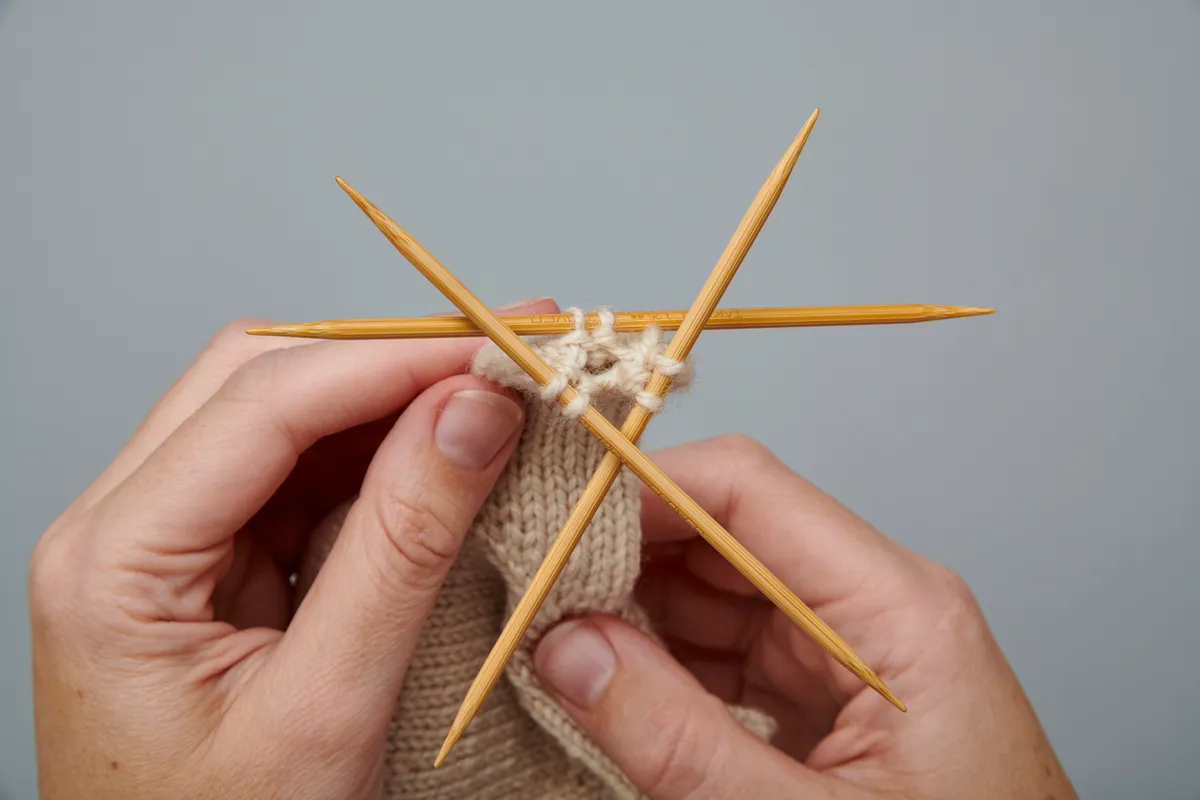
Comfort
It's important to remember that crafts are supposed to be relaxing, so it's essential that you feel comfortable.
Many people can find knitting and crochet painful on their wrists or hands, and this can be compounded with knitting by the fact that you need to hold two needles. This can be particularly painful if you suffer from arthritis or RSI.
It's not really as simple as saying one craft is better than the other, but many people who find knitting painful often find that crochet doesn't give them quite so many problems (almost certainly due to the looser nature of crochet).
Mistakes
The way that knitted fabric is created gives it advantages in terms of its elasticity and drape, but also makes it more difficult to fix mistakes as you go.
You need to keep track of all the stitches on your needle, so it's important to count them regularly, and if you do find you've made a mistake then ripping back and re-knitting can be fiddly and time-consuming.
Picking up a dropped stitch on the same row or a few rows below is easy when you know how (see our knitting for beginners guide for how it's done), but can be daunting for a beginner.
As a result, some knitters use a lifeline (a length of yarn threaded through all the stitches in a row) to give them an easy place to rip back to if needed.
Machine knitting
Knitted fabrics can also be made by machine. This not only makes industrial mass-production possible, but also adds another dimension to the hobby at home.
From basic knitting boards and looms to professional-quality machines, these tools enable you to design and create your own projects in a fraction of the time it would take by hand – and they're fun to use too!
(There is such a thing as a crochet machine, but there isn't a lot of information available about them – they're only really used in mass production and not on a home hobbyist scale).
Crochet pros and cons
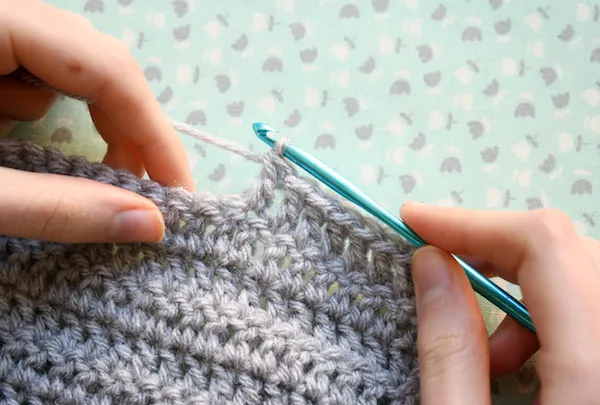
Drape
Although knitting undoubtedly creates a fabric that works better for garments, crocheted fabrics also have many qualities that set them apart from knitting. You can still control the drape of your fabric by choosing yarns and stitches that compliment your project.
As you can use negative space more with crochet, it's perfect for making lighter and more breathable garments like summer shawls or lacy cardigans.
Strength
As crochet is essentially a series of knots, this means that you can create incredibly strong and sturdy fabrics.
This is not only important for projects such as bags or hats which need to retain their shape, but also for projects like soft toys – if your fabric was to stretch too much it would not only lose its shape, but you would also be able to see the stuffing inside.
Shapes
Like knitting you can easily make flat fabrics and alter their shape with stitches, but crochet is also brilliant for making 3D shapes without the need for additional needles or panel construction.
Crochet can not only be done by row by row, but also worked in the round – which is the key to making many 3D crochet shapes. You can find out more in our how to work crochet stitches in the round tutorial.
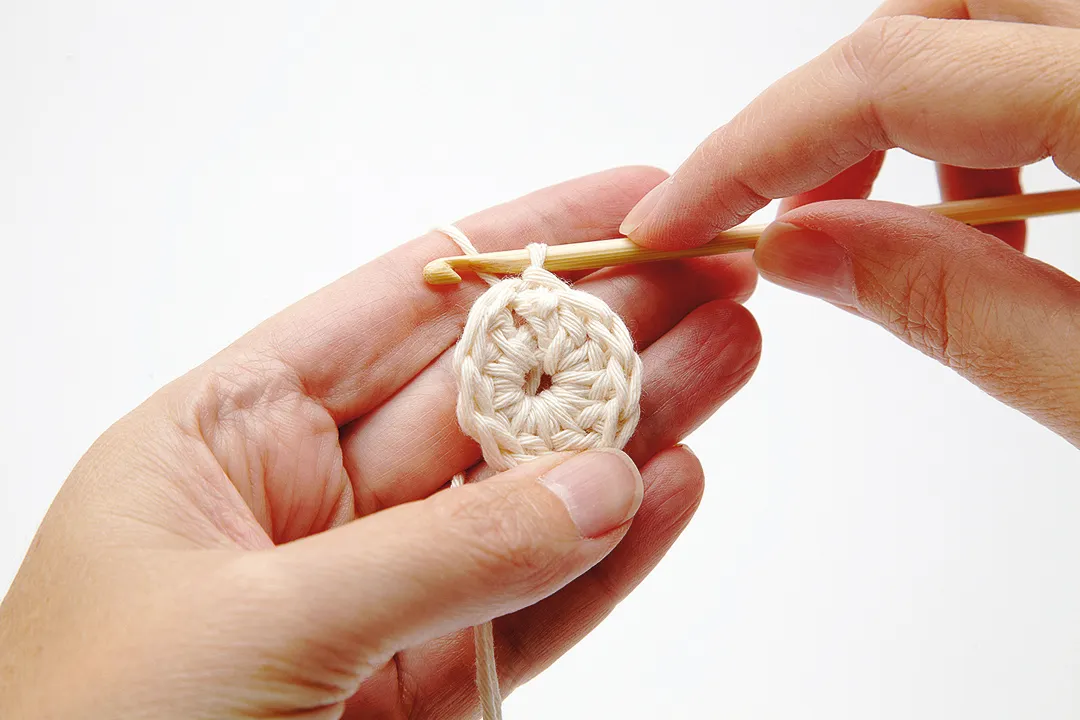
Portability
One of the key reasons people love crochet is it's portability! All you really need is your yarn and a single hook.
As each crochet stitch is made independently, if you need to stop your crocheting you can simply loosen your single active loop, remove your hook and then put it all to the side ready to insert your hook and start again when you're ready.
Mistakes
One of the really good features of crochet for beginners (and a major factor in knitting vs crochet) is that it's really easy to undo any mistakes you've made.
If you realise you've done the wrong stitch or missed one out, you can just remove your hook, pull on the yarn, which will unravel your stitches up to the point where you went wrong, then put your hook back into the finished loop of your last correct stitch and start again!
This feature also means that if you drop your hook it's easy to start again straight away, whereas if you drop your knitting needles you may need to try and put a whole row of stitches back on your needle, which isn't quite so easy.
How do I learn to crochet or knit?
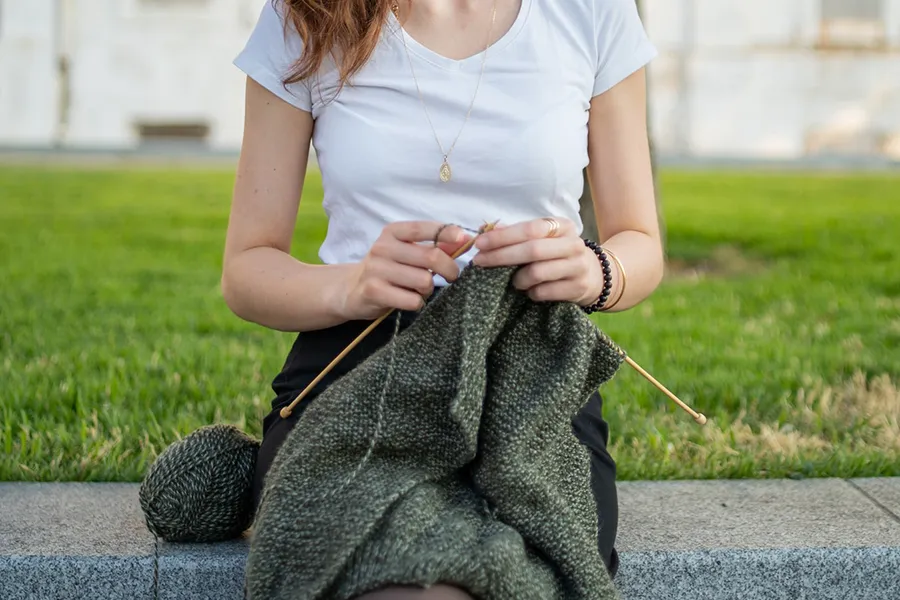
The best place to start is by checking out our full beginner's guides!
You can find handy information, tutorials, videos and more in our complete guide to knitting for beginners and crochet for beginners.
Which do you prefer – knitting or crochet?
It's a recurring joke within the yarn communities that knitters and crocheters are bitter enemies – but the truth is that we're yarny brothers and sisters, with many people enjoying and practicing both crafts.
Most people end up leaning towards one craft over the other, but there's absolutely no reason you can't enjoy the best of both worlds!
Learn more yarn craft skills with Gathered
Now that you know all about knitting and crochet, why not take your love of yarn one step further and check out our beginner's guide to weaving techniques! Become a hand-made textile master with Gathered!
